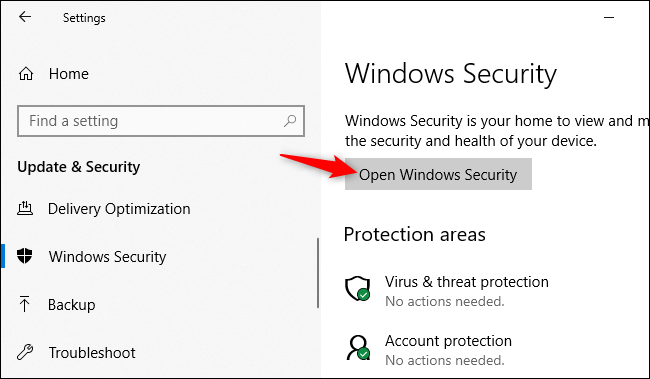How can I detect a Virus on my computer?
What does the polymorphic virus do?
Contents
Polymorphic viruses are complex file breakers that can create modified versions of themselves to avoid detection, but maintain the same basic routines after each infection. To change the composition of their physical file during each infection, polymorphic viruses encrypt their codes and use different encryption keys each time.
What are the symptoms of a polymorphic virus? Symptoms of a virus infection on a computer or network
- Slowing down computer performance.
- Unknown ads appear on the screen.
- The programs work independently.
- Files are reproduced / reproduced independently.
- Unknown files or programs on your computer.
- Files, folders, or programs are deleted or corrupted.
What does a polymorphic virus do to your computer?
A polymorphic virus is a type of malicious, destructive, or intrusive malware that can change or change, making it difficult to detect with anti-malware programs. Malicious code can be developed in a number of ways, such as by changing the file name, compressing it, and encrypting it with changing keys.
What is polymorphic attack?
Polymorphic malware is a type of malware that constantly modifies its detectable functions to prevent detection. Many common forms of malware can be polymorphic, including viruses, worms, robots, Trojans, or keyloggers.
How do polymorphic viruses spread?
Polymorphic viruses are usually spread through common cyber-attack techniques, including spam, phishing email, infected websites, or other malware. Some of the more infamous polymorphic viruses are Ursnif (also known as Gozi), a banking trojan; Vobfus, the Windows worm virus; and Bagle, an email worm.
What are polymorphic virus and stealth virus?
A stealth virus is a virus that hides changes made to files or boot sectors. The polymorphic virus, on the other hand, generates numerous mutated versions of itself, based on the inability of antiviral agents to detect all instances of the virus.
What are the examples of stealth virus?
A hidden virus can infect a computer system in several ways: For example, when a user downloads a malicious e-mail attachment; installs malware disguised as programs from websites; or uses unchecked software infected with malware.
What is difference between a polymorphic virus and an encrypted virus?
The main difference between a polymorphic and a metamorphic virus is that the polymorphic virus encrypts itself with a variable encryption key, so that each copy of the virus looks different, while the metamorphic virus rewrites its own code to make each copy different without using it. a …
What advantage do hackers obtain by using polymorphic malware?
Polymorphic malware exploits unknowing and unidentified zero-day vulnerabilities to cause disaster. When an employee clicks on a phishing email attachment or provides information through a phishing website, he or she will attack your entire network, business, and sensitive data.
What is the advantage of memory resident malware?
In-memory malware can prevent many anti-virus systems based on scanning your files. Another advantage of such transient malware is that it is easy to clean (or hide) malicious activity.
What is polymorphic malware How is it different than metamorphic malware?
The difference between a polymorphic and a metamorphic virus is that the polymorphic virus encrypts itself with a variable encryption key, so that each copy of the virus looks different, while the metamorphic virus rewrites its own code to make each copy different without using a variable encryption key. .
How is polymorphic malware detected?
Behavioral analysis and in-depth content control are proven methods for detecting polymorphic malware, and organizations are encouraged to supplement their signature-based anti-malware tools with these advanced products. It is important to note that not all sandboxes or behavioral anti-malware products are the same.
How do I manually scan my computer?
How do I scan my entire computer for viruses? You can also go to Settings> Update and Security> Windows Security> Open Windows Security. Click “Virus and Threat Protection” to run an anti-malware scan. Click “Quick Scan” to check your system for malware. Windows Security scans and gives you results.
How do I scan my entire computer?
Click the Quick Scan button. Windows Defender scans your computer and reports any findings. In the Windows Defender Security Center window, click Advanced Scan to choose between a full, custom scan, or an offline scan. Windows Defender scans your laptop of your choice and reports any findings.
Does Windows 10 automatically scan for viruses?
Windows 10 has built-in real-time antivirus protection. It runs automatically in the background, ensuring a basic level of antivirus protection for all users. … It was simply renamed “Windows Defender” and integrated into Windows itself.
What are the main causes of computer virus infection?
Clicking on links to malicious websites in emails, messaging apps, or social networking posts When visiting compromised websites, or automatic downloads, viruses can be hidden in HTML, thus downloading the webpage in your browser. Connect the device to infected external hard drives or network drives.
What are the causes and consequences of computers that are affected by viruses? Some computer viruses are programmed to harm your computer by damaging programs, deleting files, or reformatting your hard disk. Others simply copy themselves or flood the network with traffic, making it impossible to perform Internet operations.
How do I check my laptop for viruses?
To run it, go to the “Windows Security” section & gt; “Virus & amp; Security” & gt; “Scan Options” and select “Microsoft Defender Offline Scan.” After clicking the “Scan Now” button, your computer will restart in special mode to scan.


Comments are closed.